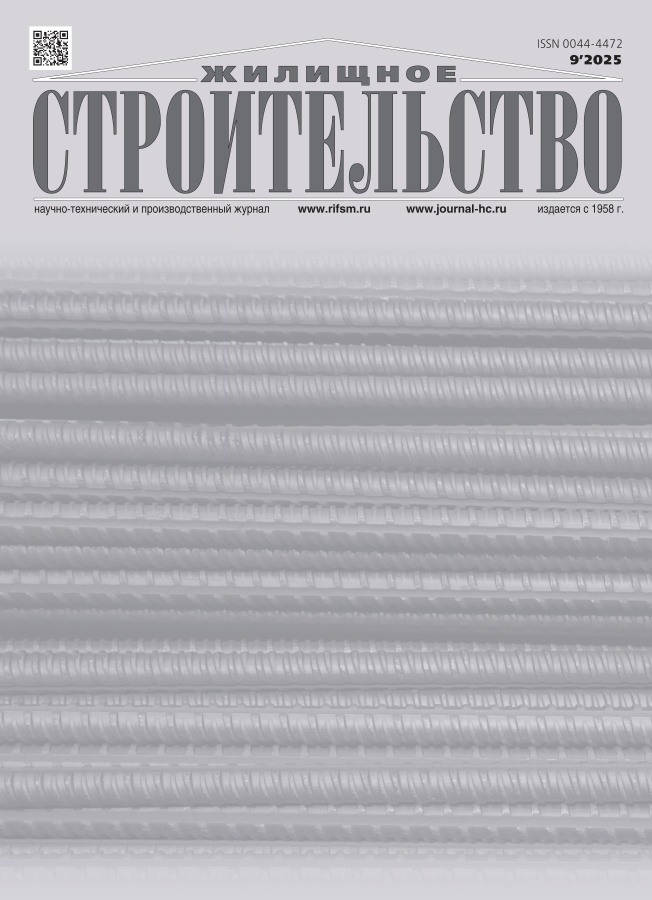On the issue of using foreign soil classification charts according to CPTU data
- Authors: Isaev O.N.1
-
Affiliations:
- JSC “Research Center of Construction” – Gersevanov Research Institute of Bases and Underground Structures
- Issue: No 9 (2025)
- Pages: 15-23
- Section: Articles
- URL: https://innoscience.ru/0044-4472/article/view/692936
- DOI: https://doi.org/10.31659/0044-4472-2025-9-15-23
- ID: 692936
Cite item
Abstract
The main data on piezostatic soil sensing (“Piezocone Penetration Testing — CPTU”), which allows, in addition to the soil resistance to probing, to determine the pore pressure in the soil adjacent to the probe, are considered. Focus is done on the pore pressure measured between the cone and the friction coupling u2. The normalized probing parameters (qt, Qt, Bq, Fr) implicitly account the pore pressure u2 are given, Foreign experts often use these parameters when drawing up map-diagrams to identify soil varieties (“qt–Bq”, “qt–Fr”, “Qt–Fr”, “Qt–Bq”, “Qt(1–Bq)–Fr”, etc.). Recently, many of the foreign map-diagrams, starts to be used in Russian geotechnical practice, including compiling computer programs for processing sensing data without conducting comparative studies. The article presents the experimental results to verify possibility of using foreign “qt–Rf” and “qt–Bq” card schemes proposed by P.K. Robertson et. al. The comparative experimental studies shown impossibility to use these foreign maps-schemes for soil varieties identification and determination on the territory of Russia during engineering and geological surveys due to their unreliability.
Full Text
About the authors
O. N. Isaev
JSC “Research Center of Construction” – Gersevanov Research Institute of Bases and Underground Structures
Author for correspondence.
Email: geotechnika2017@mail.ru
Candidate of Science (Engineering)
Russian Federation, 59, Ryazansky Avenue, Moscow, 109428References
- Boldyrev G.G. Rukovodstvo po interpretatsii dannykh ispytanii metodami staticheskogo i dinamicheskogo zondirovaniya dlya geotekhnicheskogo proektirovaniya [Guidelines for the interpretation of test data by static and dynamic sensing methods for geotechnical design]. Moscow: PRONDO. 2017. 476 p.
- Ryzhkov I.B., Isaev O.N. Staticheskoe zondirovanie gruntov [Static sounding of soils]. Moscow: ASV. 2016. 220 p. EDN: YJOXAJ
- Lunne T., Robertson P.K. & Powell J.M. Cone penetration testing in geotechnical practice. London and New York: Spon Press, 2004. 312 p.
- Schneider J.A., Hotstream J.N., Mayne P.W., Randolph M.F. Comparing CPTU Q–F and Q–Δu2/σv′ soil classification charts. Geotechnique Letters. 2012. Vol. 2. Iss. 4, pp. 209–215. https://doi.org/10.1680/geolett.12.00044
- Abu-Farsakh M.Y., Zhang Z., Tumay M., Morvant M. Computerized cone penetration test for soil classification: development of MS-Windows software. Journal of the Transportation Research Board. 2008. Vol. 2053. Iss. 1, pp. 47–64. https://doi.org/10.3141/2053-07
- Kurup P.U., Griffin E.P. Prediction of soil composition from CPT data using general regression neural network. Journal of Computing in Civil Engineering. 2006. Vol. 20, No. 4, pp. 281–289. https://doi.org/10.1061/(ASCE)0887-3801(2006)20
- Lengkeek H.J., Brinkgreve R.B.J. CPT-based classification of soft organic clays and peat. Proceeding of the 5th International Symposium on Cone Penetration Testing (CPT’22). Italy. 2022, pp. 509–514. https://doi.org/10.1201/9781003308829-71
- Makra A., Kim H. 2022. Classification of Miocene deposits using CPT data. Proceeding of the 5th International Symposium on Cone Penetration Testing (CPT’22). Italy. 2022, pp. 528–533. https://doi.org/10.1201/9781003308829-71
- Ryzhkov I.B. & Isaev O.N. Cone penetration testing of soils in geotechnics. Stockholm, Sweden: Bokforlaget Efron & Dotter AB. 2016. 408 p. EDN: WKSKMH
- Schnaid F. In situ testing in Geomechanics. London and New York: Taylor & Francis. 2009. 329 p. https://doi.org/10.1201/9781482266054
Supplementary files




















